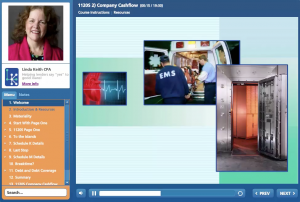Arthur asks:
Should 1065 K-1 guaranteed payments be subtracted from company cash flow when finding debt service? Most of my career has centered on CRE loan underwriting and origination. The CRE view is that debt is senior to obligations to pay owners. Guaranteed payments and other cash distributions are discretionary. With that thinking, the payments to the owners should not be considered.
Linda says:
Your question touches on global cash flow, K-1 and guaranteed payments. Throw in the difference between Commercial Real Estate (CRE) and Commercial and Industrial (C&I) lending, and this is a great question. And yes, the difference in approach is certainly related to the comparison of CRE to C&I.
Guaranteed payments and distributions as owner compensation
Consider a company in which the owner is also the President and works full time in the business. If the company is an S Corporation, they pay some of their compensation as wages. They often choose to pay a significant amount in distributions as well.
They do this because they pay no payroll taxes on distributions. It is common practice for S Corporation distributions to owner/employees to be a normal form of compensation.
If the company is an LLC or partnership filing a 1065, owner compensation is the combination of distributions and guaranteed payments. If you do not consider those amounts as a use of cash-flow before debt payment, then you are assuming that the owner/employees just do not need to get paid at all, or are completely willing to forego their compensation.
In a pinch, that may be true. But underwriting in a way that requires owner/employees to forego compensation in order to make the business debt payments implies that the company is not strong enough to both pay the owner/employees for the work they do in the company and cover business debt.
Guaranteed payments have already been considered
On a 1065 return, guaranteed payments are a front page line-item. If you start with the bottom line, ordinary income, you do not need to make any adjustment to count guaranteed payments against the company. If you want to know what is left in the company for debt service after the owner/employee’s get paid, however, go to the Schedule M-2: Analysis of Partners’ Capital Accounts to find and subtract cash distributions.
If, in your opinion, either the guaranteed payments or the distribution are more like return on investment and less like compensation to the owners for the work that they do in the company, then leave the distributions alone and add back the guaranteed payments found on the front page of the 1065.
Why C&I is different than CRE
The big difference is that in C&I lending, shareholder or owner wages, distributions and guaranteed payments often are the ‘normal’ compensation related to their employment, rather than a distribution from an investment. And yes, owner distributions may be more of a return on investment than compensation for services. Or not. Your decision.
A clue to how to treat guaranteed payments in YOUR analysis
If it you find guaranteed payments on a 1065 K-1, see if the Self-Employed Earnings down on K-1 Line 14 includes the Guaranteed Payments. If so, they are compensation for services rather than guaranteed payments related to capital.
More help
The 3-module set on 1065 Tax Return Analysis, along with the 3 modules on S Corporations, are a good resource. To try out the online training on credit analysis, you may take up to five free modules at www.LendersOnlineTraining.com.

 Click here for free online modules on credit analysis.
Click here for free online modules on credit analysis.